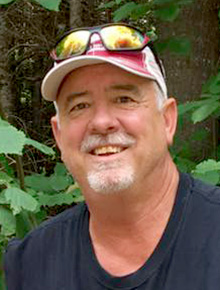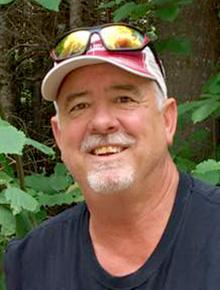
With all of the recent hunting opportunities it is hard to squeeze in other important fall projects, but I have made time to get them done.
I got my burn breaks mowed for the prescribed fires that will take place on my wildlife property to enhance the diversity and stand integrity of the native plant species that grow there.
Another project that was actually five projects all fell under the same outdoor header. That project included fall dormant seeding of native plants. I was fortunate enough to be able to work with the University of Minnesota’s Bee Research team.
They started a research program that included the planting of numerous pollinator plots across the state. Each of these sites was planted last year and needed some additional inter-seeding to bring them to their full potential for pollinators and butterflies.
We all know that planting yard grass in late fall is a great time to get these grasses established. The hot weather is over and cool days and nights with periodic watering can show great results in as little as a few weeks. Native grasses and flowers can be planted in the fall but the objective is different. We don’t actually want them to germinate until spring.
If you plant native grasses before the soil temperatures drop to about 50 degrees, they can germinate and with winter so soon to follow, most of those plants will not be well enough established to survive the winter. The idea is to spread these seeds and allow them to lay dominant until soil temperatures warm in the spring, allowing them to germinate. These are called fall dormant seedings and are now some of the most preferred methods to establish these restored prairie flowers and grasses.
Many native flower seeds need to go through a freeze/thaw cycle to scarify the seeds. This freeze/thaw action cracks open the seed’s shell, allowing for a much more successful germination. When I collect native seeds while out pheasant hunting in the fall, I will put them in a paper envelope and toss them in the house freezer to be planted in the spring. Fall dormant seeding achieves the same result.
It takes special equipment to seed native grasses and flowers. I bought this equipment a few years back so I had it when I wanted to use it. In addition to native plant restorations, these fall seedings are also used for waterway and stream/lake/river setbacks and Conservation Reserve Program seedings.
The seeder I use is called a pendulum seeder. It is designed for a three-point hitch on a tractor, but I converted mine to operate from a 5 hp Honda engine and it rides in the back of my Polaris Ranger.
This setup can go places a tractor cannot reach and into soils too wet for a tractor to operate. The advantage of a seeder of this nature is that it is much faster than a conventional seed drill and it does not plant seeds in a row.
They are distributed by a tube that oscillates back and forth for even seed distribution. It also is less likely to leave skips or gaps that you might get with a native seed drill.
The whole thing looks kind of goofy but the results speak for themselves. The snow then covers the seeds and packs them tightly to the soil for a great seed to soil contact. When soil temperature rises in the spring, these plants will take off each on their own schedule. It takes two to three years for these plants to really look good.
The first year the plants expend most of their energy putting down deep roots. The grasses in your yard have roots that may go down to about 5 inches. Native grasses have roots that reach down up to 20 feet. This makes these plants much more drought tolerant than their non-native cousins. The seeder comes off in a few days when my last project is completed. You can even spread these native plant seeds on top of the snow in early winter or early spring.
The sun angle warms the seeds and they sink down through the snow to the dirt below. Dormant fall seeding is one more great fall outdoor activity, and work done now will pay great wildlife benefits later.
Scott Rall, Worthington, is a habitat conservationist, avid hunting and fishing enthusiast and is president of Nobles County Pheasants Forever. He can be reached at scottarall@gmail.com. or on Twitter @habitat champion.



